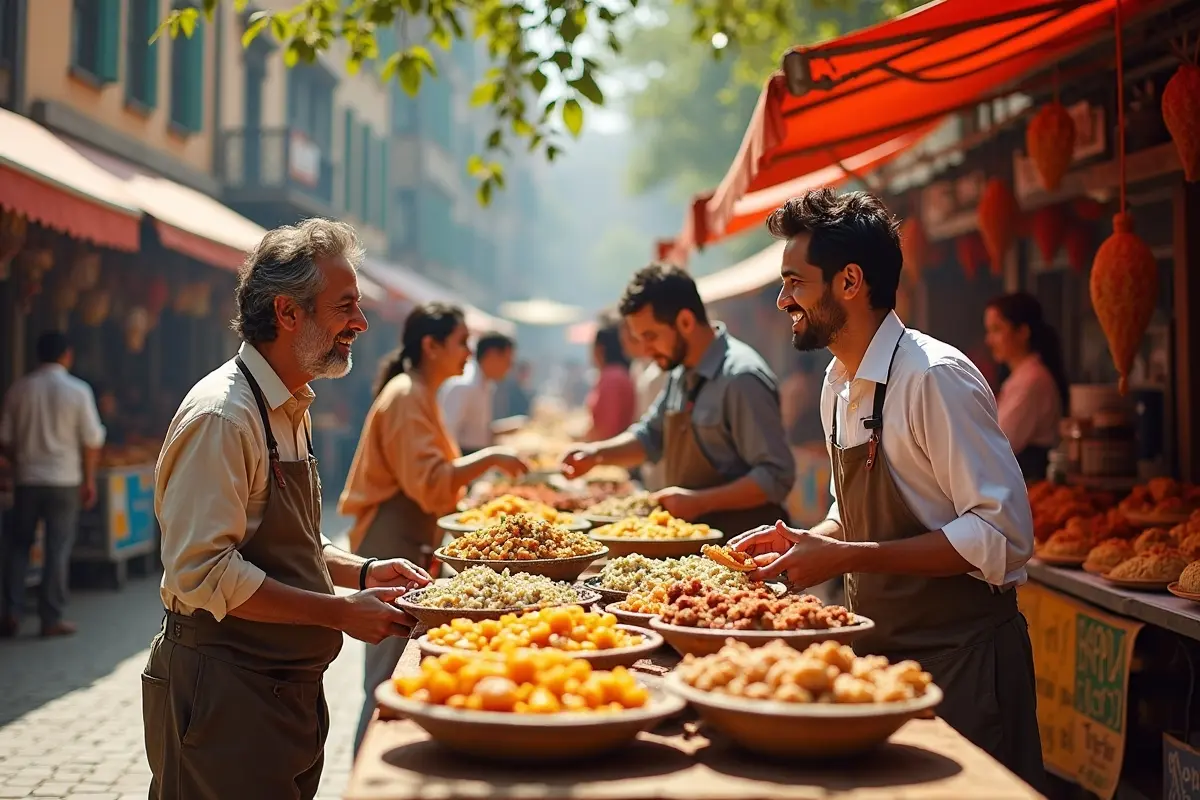Exploring traditional cuisine reveals new opportunities for travelers and food lovers. The aromas, stories, and rituals of local dishes show the deep link between food and culture. Food is more than a meal; it reflects history and identity.
Eating family recipes or street food connects us to the traditions and wisdom of past generations. Studying these traditions and case studies shows how food and cultural expression relate to societal trends and community life. Knowing the stories behind dishes—whether from celebrations, daily life, or scarcity—helps us see how food shapes and is shaped by communities.
From busy street markets and artisan kitchens where ancient methods are preserved, the story of traditional food reflects a region’s history, challenges, and triumphs. Travelers stepping off the beaten path encounter local vendors and artisans, gaining perspectives beyond guidebooks. Every market, kitchen, and dining table becomes a microcosm of culture and change.
As Claudette Spinelli shows, exploring food’s cultural role enriches our understanding of flavors and communities. Culinary travel turns eating into an immersive journey, fostering respect and appreciation for food identities. In a globalized world of fast food, this mindful exploration keeps unique food cultures alive and thriving.
Contents
The Significance of Traditional Cuisines
Traditional cuisines embody a community’s history and collective memory. Ingredients and techniques tell stories of migration, adaptation, and fusion across generations. Dishes from Asia to the Americas reveal resilience and ingenuity, shaping regional identity. Food connects us to our ancestors and fosters belonging, preserving stories over time.
Traditional dishes serve as edible archives of influences, climate, and migration that define societies. The ways food is harvested, prepared, and enjoyed are celebrated through family rituals and festivals, marking seasonal changes and community victories. Each meal allows individuals to participate in cultural memory, reliving the spirit and beliefs of ancestors.
Immersing in Local Food Festivals
Food festivals are vibrant events where culinary and cultural boundaries blur. For example, Baojing County’s rural food festival in Hunan Province showcases how traditions come alive, providing a sensory experience of diverse communities’ lives. From street stalls to large feasts, these events highlight heritage and innovation, boost local economies, encourage social dialogue, and promote mutual respect.
Visitors can sample rare dishes, watch cooking demos, join traditional games, and learn about local ingredients. These festivals foster nostalgia, community pride, and cultural transmission to younger generations. For outsiders, the warmth and hospitality can spark curiosity and respect for new traditions.
Hands-On Experiences Through Cooking Classes
Cooking classes let participants experience a culture firsthand. Guided by local chefs, travelers become active contributors to regional culinary traditions. In Northeast India, tourists and locals bond over cooking sessions, learning about indigenous spices, fermentation, and traditional recipes. These experiences often include shopping at local markets, offering insights into seasonality and regional produce.
Such immersive activities bridge generations, promote sustainable practices, and open doors to authentic travel. By kneading dough, shaping dumplings, and simmering soups with local experts, participants not only learn recipes but also gain cultural insights and values. The knowledge inspires travelers to replicate these experiences at home and share their culinary stories.
Supporting Indigenous Food Initiatives
The resurgence of indigenous foodways is an essential step in sustaining biodiversity and restoring lost traditions. Initiatives such as the Indigenous Food Lab in Minneapolis, established by Chef Sean Sherman, underscore the necessity for indigenous-led food sovereignty. These programs empower tribal communities to reclaim their culinary narrative through education and entrepreneurship.
Traditional crops and foraging practices are revitalized, contributing to healthier diets and environmental stewardship. Beyond restoring traditional food systems, such initiatives foster health, environmental stewardship, and economic independence.
Discovering Hidden Culinary Gems
The soul of a region’s food culture is often found in its unassuming corners—family-owned eateries, markets with native produce, and street vendors offering heirloom dishes. These hidden gems, away from mainstream tourism, let travelers experience everyday life through locals’ eyes and tastes. Visiting neighborhood markets at dawn or sampling dishes cooked in old clay ovens reveals flavors not in glossy travel brochures.
Curiosity, open-mindedness, and respect often reward food explorers with memorable flavors and friendships. In these small, intimate settings, culinary traditions are kept alive, showcasing the creativity, resourcefulness, and hospitality of a place and its people.
Preserving Culinary Heritage
The urgency to protect intangible cultural heritages like food traditions has spurred innovative efforts. By sharing and documenting these resources, communities can counter globalization and urbanization that threaten local flavors. Similar movements are revitalizing native cuisines worldwide to preserve traditional recipes.
Through education, digital storytelling, and gastronomic tourism, culinary heritage custodians aim to ensure future generations can access the tastes, techniques, and stories shaping their communities for centuries.
Conclusion
Embarking on a culinary journey through local traditions is more than a gastronomic adventure—it is a heartfelt tribute to the diversity and resilience of global communities. Through food, travelers gain entry into cultural histories, forge meaningful connections, and advocate for the preservation of endangered recipes and techniques.
In savoring ancestral flavors and supporting dedicated custodians of tradition, everyone plays a part in nurturing the world’s culinary heritage for generations to come. By choosing to explore and celebrate local fare, we contribute to a vibrant, sustainable, and inclusive future for the world’s foodways, ensuring that the stories and wisdom embedded in every dish continue to inspire curiosity, respect, and joy.



